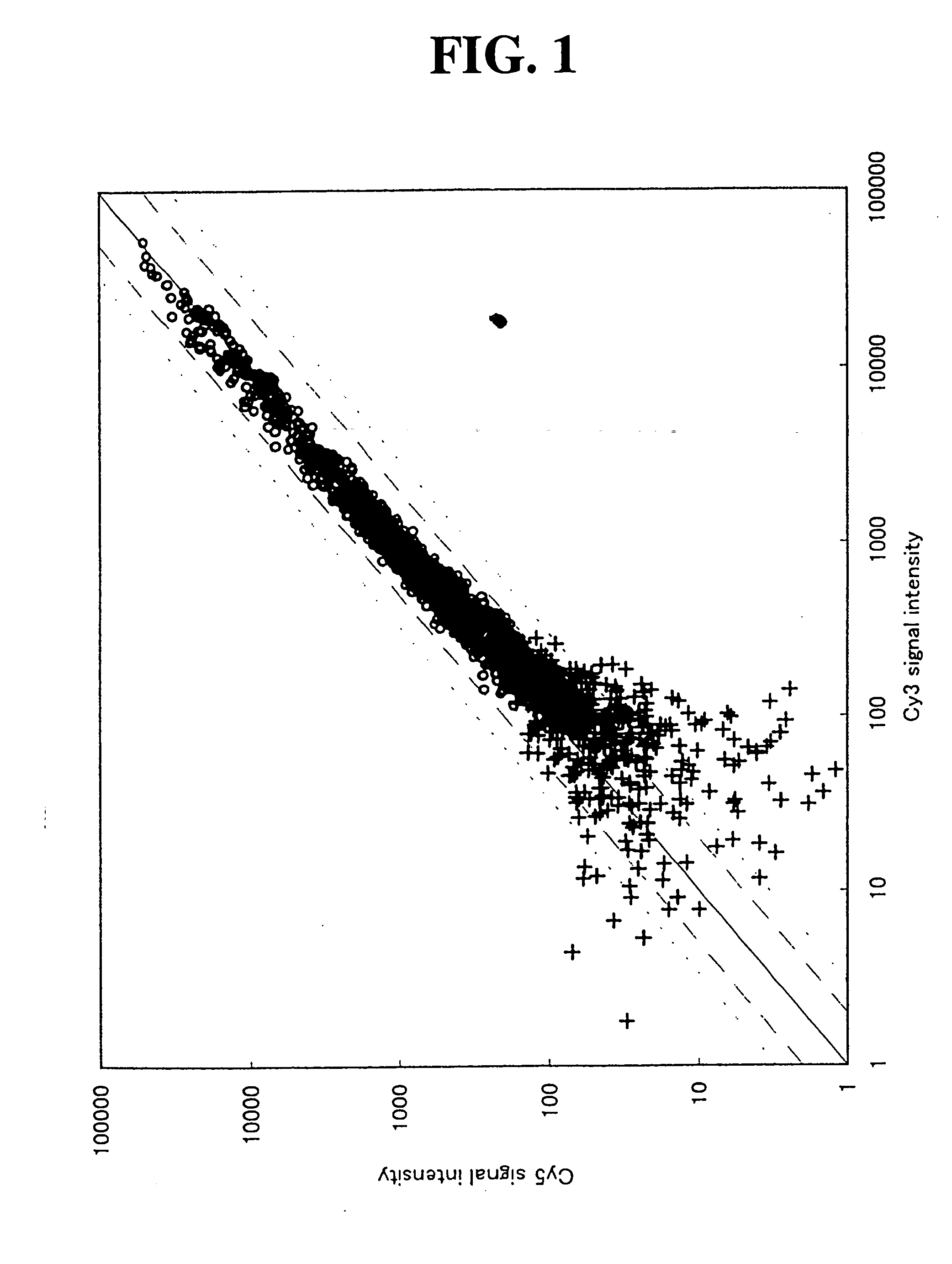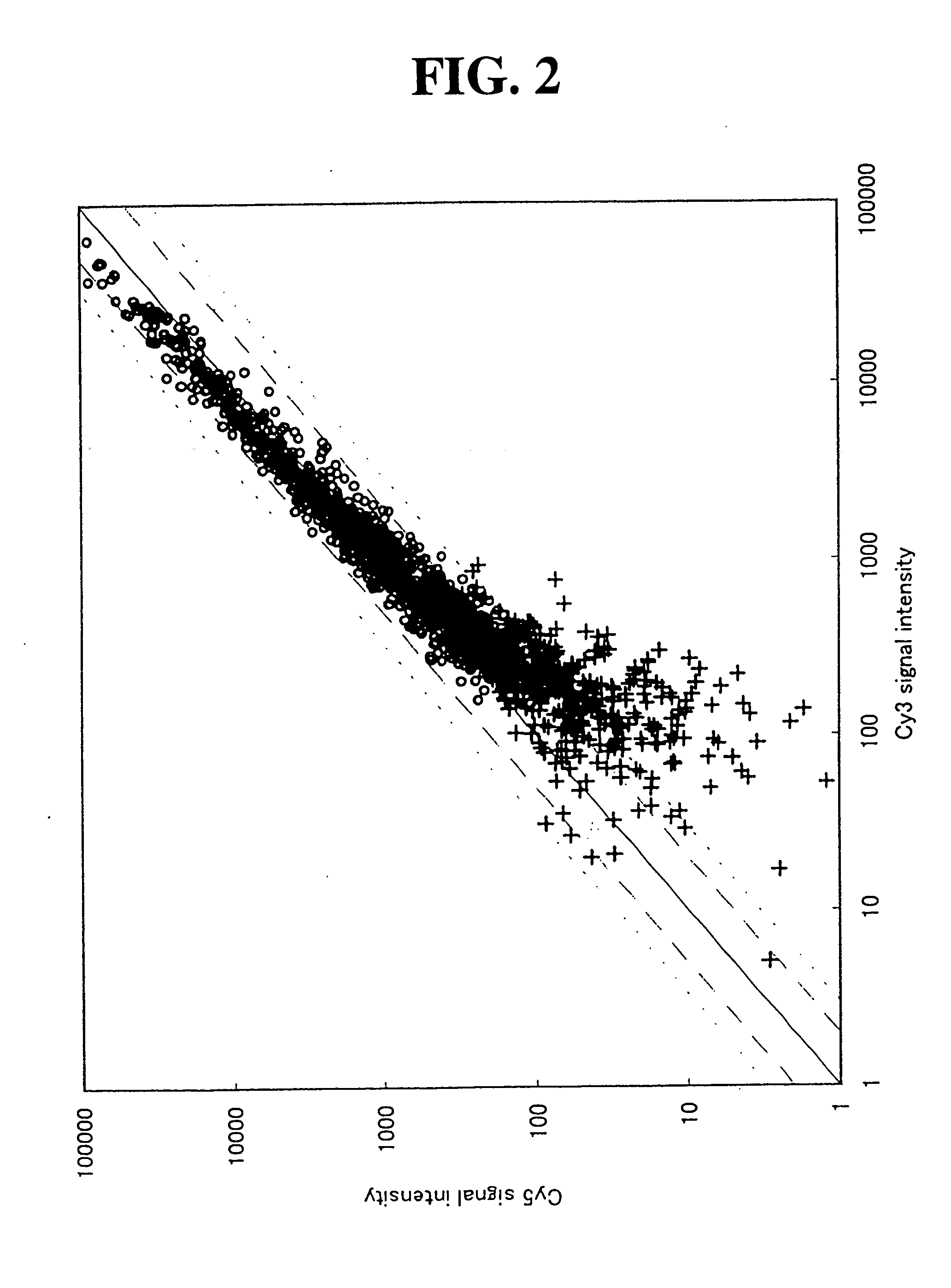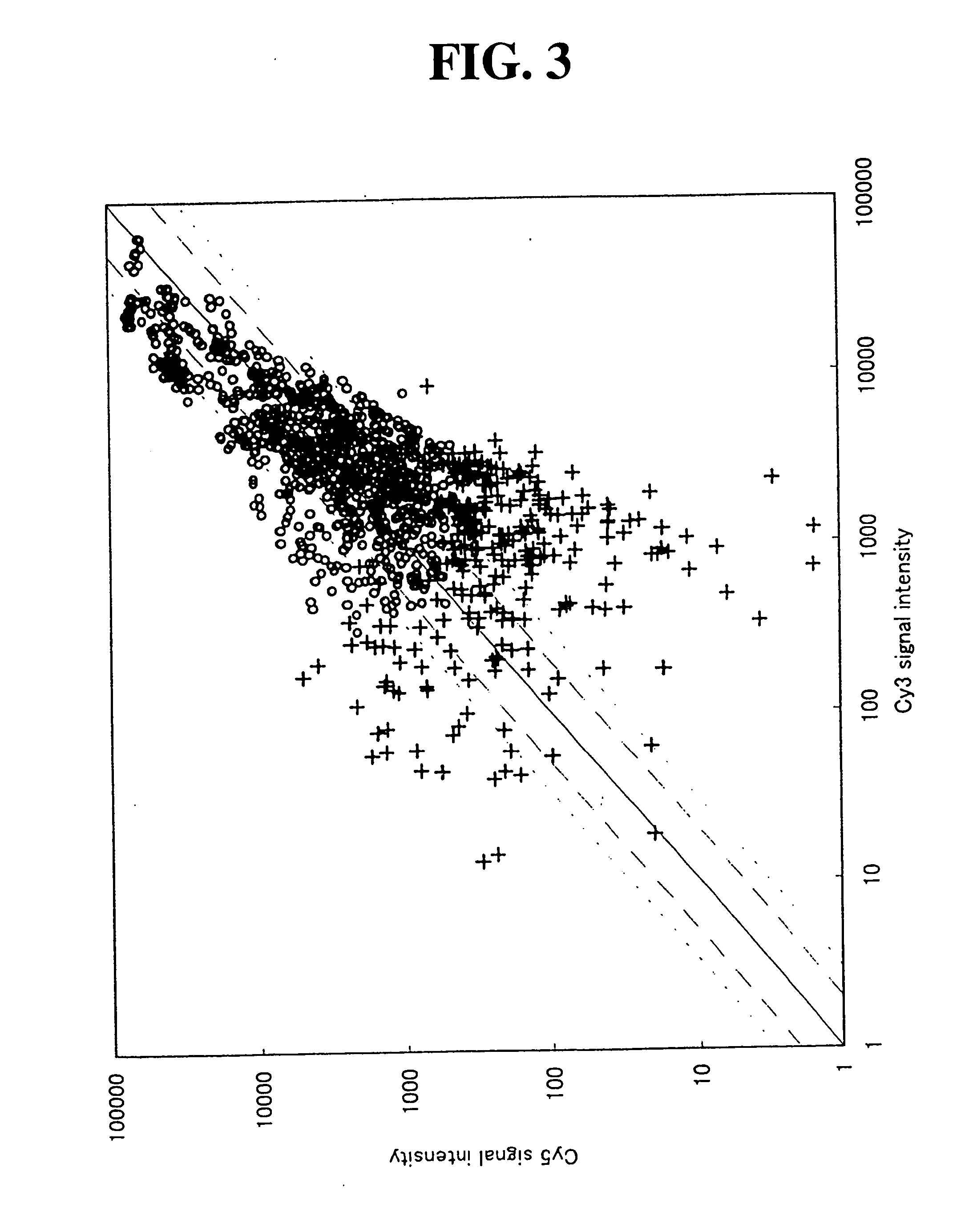Method of labeling nucleic acids
- Summary
- Abstract
- Description
- Claims
- Application Information
AI Technical Summary
Benefits of technology
Problems solved by technology
Method used
Image
Examples
example 2
[0097] (1) Studies on Combinations of Concentration Ratios of Non-Labeled Substrate / Labeled Substrate
[0098] By setting the concentration ratio of the non-labeled substrate / labeled substrate high (5 / 1) or low (2 / 1), studies were conducted on which of the concentration ratios was suitable for each of Cy3 and Cy5. Here, the preparation of labeled cDNA probes, hybridization with a DNA microarray, washing, scanning and analysis were carried out under the same conditions as those described in Example 1 except that the concentration ratios of the non-labeled substrate / labeled substrate were changed. As the DNA microarray, there was used IntelliGene.TM. Human Cancer Chip Ver. 2.0 (manufactured by Takara Bio Inc.). The combinations studied and the results of the range of the expression ratio are shown in Table 3.
3 TABLE 3 Non-Labeled Substrate / Cy5 Labeled Substrate 5 / 1 2 / 1 Cy3 5 / 1 1.96.sup.(i) 2.99.sup.(iii) 2 / 1 .sup. 1.80.sup.(ii) .sup. 2.27.sup.(iv)
[0099] In Table 3, (iv) shows a comparat...
example 3
[0109] In order to confirm that the results obtained in Example 1 are phenomena generally found for any sorts of DNA chips without being altered by the properties (degree of background and the like) of particular substrates of DNA chips and DNA microarrays and the binding manner of the DNA with the substrate, the studies were conducted in the same manner as in Example 1 using two kinds of DNA chips having different substrates.
[0110] The preparation of the DNA chips was carried out as follows. Concretely, a slide glass into which an activated carboxyl group was introduced was prepared in accordance with the method described in WO 01 / 02538. Next, approximately 770 kinds of human cancer-related genes listed in Tables 4 to 60 were selected, and primer pairs were designed so that approximately 300 bp regions shown in Tables 4 to 60 can be amplified on the basis of the nucleotide sequences of these genes.
[0111] Tables 4 to 60 are tables showing the names of genes and accession numbers (Ge...
example 4
[0176] The optimum concentration ratio of the non-labeled substrate / labeled substrate for Cy5 was evaluated by varying a concentration ratio of the non-labeled substrate / labeled substrate for Cy5 within the range of 3 / 1 to 9 / 1, with fixing a concentration ratio of the non-labeled substrate / labeled substrate for Cy3 at 2 / 1. Each of the substrate concentrations is shown in Table 63.
63TABLE 63 Non-Labeled Substrate / Labeled Substrate = 3 / 1 dATP 0.20 mM dGTP 0.20 mM dCTP 0.20 mM dTTP 0.15 mM Cy-dUTP 0.05 mM Non-Labeled Substrate / Labeled Substrate = 5 / 1 dATP 0.30 mM dGTP 0.30 mM dCTP 0.30 mM dTTP 0.25 mM Cy-dUTP 0.05 mM Non-Labeled Substrate / Labeled Substrate = 7 / 1 dATP 0.40 mM dGTP 0.40 mM dCTP 0.40 mM dTTP 0.35 mM Cy-dUTP 0.05 mM Non-Labeled Substrate / Labeled Substrate = 9 / 1 dATP 0.50 mM dGTP 0.50 mM dCTP 0.50 mM dTTP 0.45 mM Cy-dUTP 0.05 mM
[0177] The preparation of the labeled cDNA probes, hybridization, washing and analytical conditions were carried under the same conditions as those ...
PUM
| Property | Measurement | Unit |
|---|---|---|
| Molar density | aaaaa | aaaaa |
| Molar density | aaaaa | aaaaa |
| Molar density | aaaaa | aaaaa |
Abstract
Description
Claims
Application Information
 Login to View More
Login to View More - Generate Ideas
- Intellectual Property
- Life Sciences
- Materials
- Tech Scout
- Unparalleled Data Quality
- Higher Quality Content
- 60% Fewer Hallucinations
Browse by: Latest US Patents, China's latest patents, Technical Efficacy Thesaurus, Application Domain, Technology Topic, Popular Technical Reports.
© 2025 PatSnap. All rights reserved.Legal|Privacy policy|Modern Slavery Act Transparency Statement|Sitemap|About US| Contact US: help@patsnap.com



